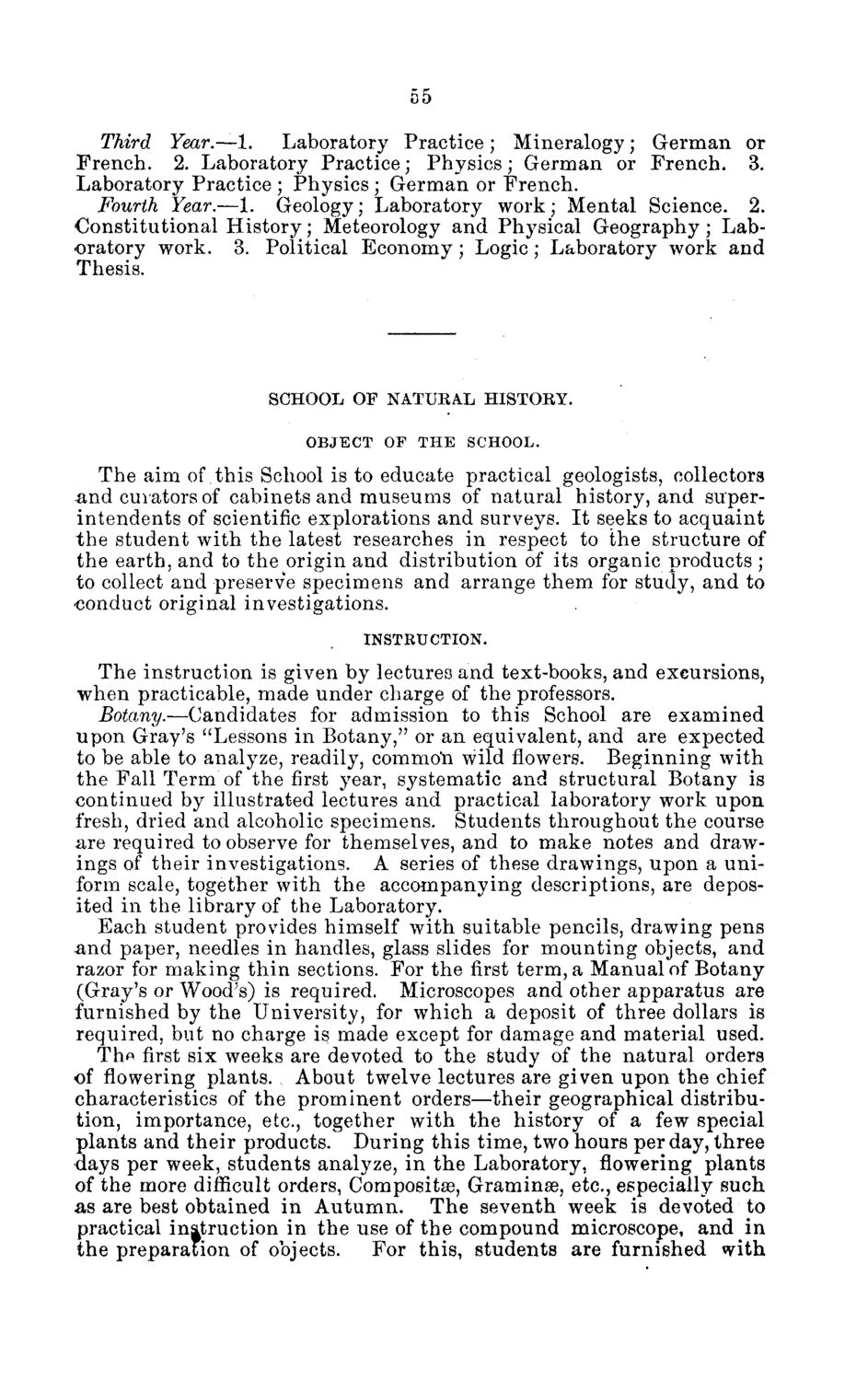| |
| |
Caption: Board of Trustees Minutes - 1876
This is a reduced-resolution page image for fast online browsing.

EXTRACTED TEXT FROM PAGE:
55 Third Year.—1. Laboratory Practice; Mineralogy; German or French. 2. Laboratory Practice; Physics; German or French. 3. Laboratory Practice ; Physics; German or French. Fourth Year.—1. Geology; Laboratory work; Mental Science. 2. Constitutional History; Meteorology and Physical Geography; Laboratory work. 3. Political Economy ; Logic; Laboratory work and Thesis. SCHOOL OF NATURAL HISTOBY. OBJECT OF THE SCHOOL. The aim of this School is to educate practical geologists, collectors and curators of cabinets and museums of natural history, and superintendents of scientific explorations and surveys. It seeks to acquaint the student with the latest researches in respect to the structure of the earth, and to the origin and distribution of its organic products ; to collect and preserve specimens and arrange them for study, and to •conduct original investigations. INSTRUCTION. The instruction is given by lectures and text-books, and excursions, when practicable, made under charge of the professors. Botany.—Candidates for admission to this School are examined upon Gray's "Lessons in Botany," or an equivalent, and are expected to be able to analyze, readily, commo'n wild flowers. Beginning with the Fall Term of the first year, systematic and structural Botany is continued by illustrated lectures and practical laboratory work upon fresh, dried and alcoholic specimens. Students throughout the course are required to observe for themselves, and to make notes and drawings of their investigations. A series of these drawings, upon a uniform scale, together with the accompanying descriptions, are deposited in the library of the Laboratory. Each student provides himself with suitable pencils, drawing pens and paper, needles in handles, glass slides for mounting objects, and razor for making thin sections. For the first term, a Manual of Botany (Gray's or Wood's) is required. Microscopes and other apparatus are furnished by the University, for which a deposit of three dollars is required, but no charge is made except for damage and material used. Th« first six weeks are devoted to the study of the natural orders of flowering plants. About twelve lectures are given upon the chief characteristics of the prominent orders—their geographical distribution, importance, etc., together with the history of a few special plants and their products. During this time, two hours per day, three days per week, students analyze, in the Laboratory, flowering plants of the more difficult orders, Composite, Graminse, etc., especially such as are best obtained in Autumn. The seventh week is devoted to practical instruction in the use of the compound microscope, and in the preparation of objects. For this, students are furnished with
| |